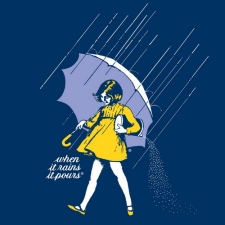By Team ICG® Master Trainer Joan Kent
It”™s possible, even likely, that you have cycling class members with hypertension. It”™s possible that they”™ve been told by their doctors to cut back on salt in their diets. If not, it”™s still possible that they”™re cutting back on salt because that”™s the prevailing wisdom for controlling blood pressure.
As we all know, sodium is loss in sweat. The more we sweat, the more we lose. Long and/or intense trainings or hot environments result in greater sweat production and greater sodium loss. Symptoms of low sodium can include disorientation, nausea, fatigue, even seizures or collapse. Even in a controlled indoor environment, warm outdoor temperatures can increase sweating.
As important as sodium levels are, it”™s obviously not a good idea for our students to cut back on salt intake without letting the prescribing M.D. know that they take cycling classes and often sweat profusely in them. In warmer weather, this becomes even more important.
But this post isn”™t just about salt. High-carb diets may raise blood pressure because of the increased insulin they trigger. There are several mechanisms by which high levels of insulin can raise blood pressure.
High insulin levels increase sympathetic nervous system activity, leading to vasoconstriction. That increases both heart rate and blood pressure.
Insulin also stimulates the proliferation/multiplication of the smooth muscle cells lining the arteries. That may narrow the size of the arterial opening (lumen) and increase blood pressure, sort of in the same way that a narrower hose can increase water pressure.
Insulin promotes the production of serotonin, a brain chemical that”™s also a vasoconstrictor. Vasoconstriction can raise blood pressure. The relationship between insulin levels and serotonin production is pretty much linear, so the more insulin secreted — say, in response to a high-carb diet — the more serotonin is produced. The more serotonin, the more vasoconstriction, and so on.
As mentioned in a previous post, high insulin levels can increase production of series 2 prostaglandins, which are hormones that control cellular functions. Among their numerous negative health consequences, Series 2 prostaglandins cause inflammation and increase blood pressure.
So what should we recommend for our cycling students?
First, it”™s always a good idea to stay away from simple (or as I like to call them, junky) carbs and limit alcohol. That can help to keep insulin levels from skyrocketing.
Second, avoiding all-carb meals/snacks is another good idea. Meals and snacks that include protein and healthful, unsaturated fats have less impact on insulin levels.
Third, avoid processed (also junky) foods that are loaded with sodium that we consumers can”™t control.
Fourth, modify — but don”™t eliminate — salt. We need it to replace what we lose in a cycling class. The upper limit is 2300 mg, or 1500 mg for older or hypertension-prone individuals. But for someone who sweats profusely, it might be possible to exceed those limits safely to a degree. It”™s also possible to go too low, and one way of gauging that is by urine production. If you feel you can”™t hold 50% of your water intake, that”™s a sign that you could need more salt.
As some of you may be aware, there”™s a long-standing table salt/sea salt debate raging. Some sources maintain that the natural minerals in sea salt reduce the overall sodium content. Or that the larger size of sea salt crystals reduces the amount of salt in a teaspoon. Or that the more intense flavor of some sea salts encourages reduced consumption. These factors are said to make sea salt more healthful, but arguments appear to be inconclusive. One suggestion for sea salt users might be to take a kelp tablet daily to compensate for the absence of iodine that”™s typically added to table salt. Or to buy sea salt with added iodine. Iodine”™s necessary to prevent goiter.
Rather than join the Great Salt Debate, my point in this post is to encourage moderate consumption of salt among our cycling participants concerned with sodium and hypertension, primarily to avoid the negative consequences of low sodium.
Even more importantly, I”™d encourage smart consumption of the best carbs to avoid the various mechanisms — related to insulin secretion — that can and DO cause hypertension, even with a low-sodium diet.
Originally posted 2013-07-01 08:22:47.
- New Year’s Resolutions: A Sugar Addict’s Survival Guide - April 15, 2024
- Motivation vs. Enthusiasm - October 12, 2023
- Why Exercise Shouldn’t Be Just One Thing - November 9, 2022

Well in that case, “pass the salt please”.
Great post Joan. In fact any post that reminds us to consider the current level of health and fitness of our riders is important beyond the obvious knee or back injury.